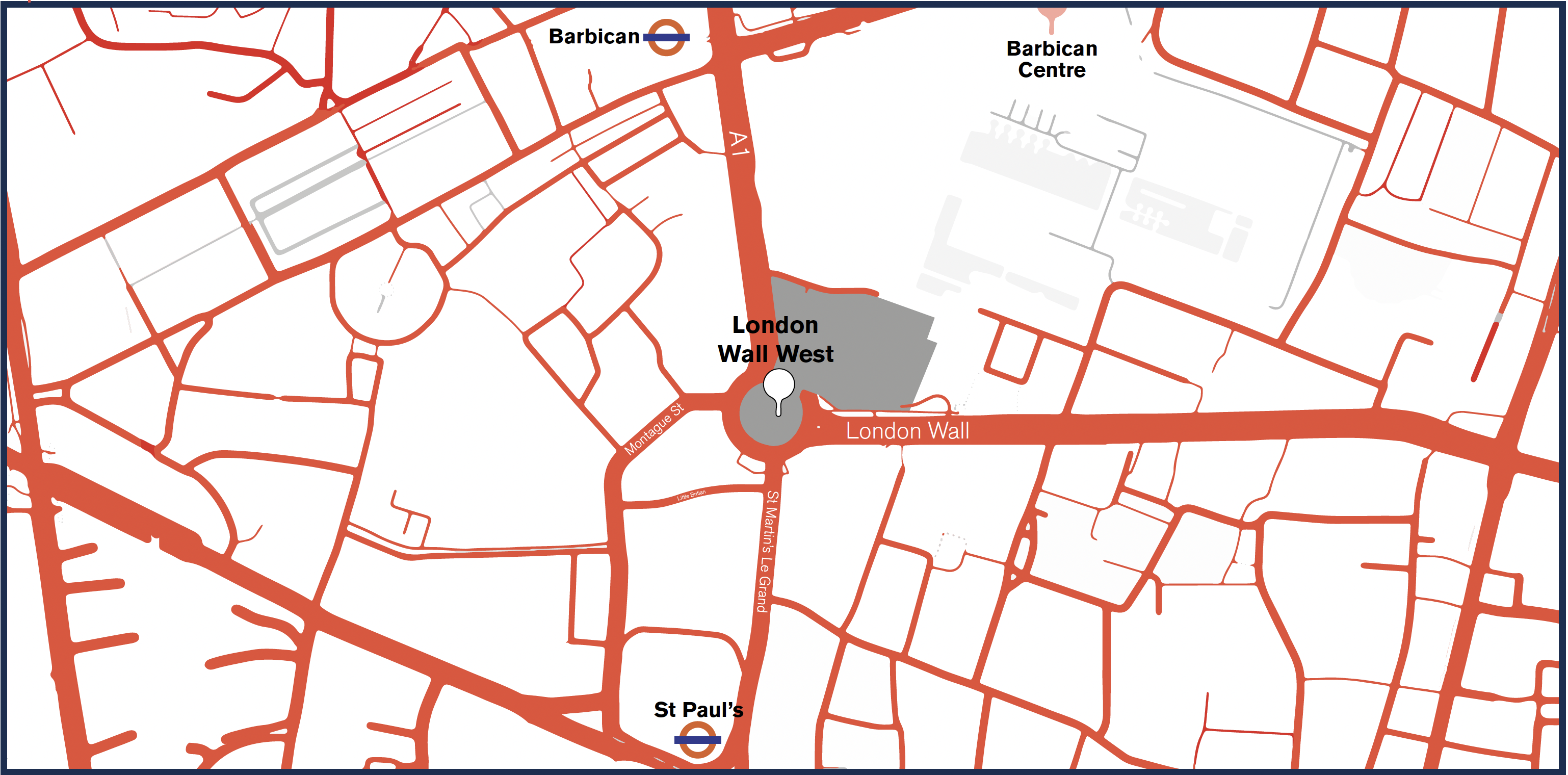Why redevelop this site
This site is under review because the Museum of London is moving to a new home in West Smithfield and because after 50 years of operation Bastion House no longer meets the needs of modern occupiers.
The London Wall West site is located at the western end of London Wall. It comprises a number of existing inter-linked buildings, including the current home of the Museum of London (which is planning a move to Smithfield Market) at 150 London Wall, and Bastion House at 140 London Wall, a 1970s office building that sits above the east side of the museum podium.

Considering reuse and demolition
It is unfeasible to undertake a “light touch” refurbishment due to inherent safety concerns with the existing buildings that make them unsuitable for retention and adaptation. An interim whole life cycle carbon assessment has therefore been prepared to compare two options – one to partially demolish, refurbish and extend the existing buildings and another to fully redevelop them. The assessment concludes that the redevelopment option on a kgCO2e/m2 basis would perform 10% better than a part-retention option, which would still require a significant carbon investment. A redevelopment option is now being taken forward which requires more carbon in absolute terms. The City of London are choosing to make this carbon investment to unlock the greatest amount of benefits at the site. You can view the Whole Life Carbon Assessment of the proposals.

Assessing what office occupiers want and need
With the Museum of London moving, the existing cultural use on site will be lost. The site therefore needs reimagining to make the most of the rich heritage and culture that surrounds it. In doing so, London Wall West has significant potential to contribute to the City Corporation’s emerging Culture Mile and Destination City initiatives to “activate the spaces in between” the City’s major cultural institutions, including the Barbican, Guildhall and the new London Museum at West Smithfield. Creating these active spaces within and outside of the buildings, will in turn have major benefits to local residents, visitors and workers.

Meeting the City Corporation’s Culture Mile and Destination City aspirations
With the Museum of London moving, the existing cultural use on site will be lost. The site therefore needs reimagining to make the most of the rich heritage and culture that surrounds it. In doing so, London Wall West has significant potential to contribute to the City Corporation’s emerging Culture Mile and Destination City initiatives to “activate the spaces in between” the City’s major cultural institutions, including the Barbican, Guildhall and the new London Museum at West Smithfield. Creating these active spaces within and outside of the buildings, will in turn have major benefits to local residents, visitors and workers.

Considering how to improve the public realm
The environment around London Wall West is difficult to navigate, lacking in public realm and closed off from the local area. It is dominated by the road and roundabout at street level, with all building entrances at highwalk level. The road network can also be dangerous for pedestrians, cyclists and drivers. The result is that the connection between the existing buildings and street level is poor. There is also an opportunity to improve access to key local and heritage assets, including the currently concealed Roman Fort Gate and setting of Ironmongers’ Hall.
London Wall West highlighted in grey
